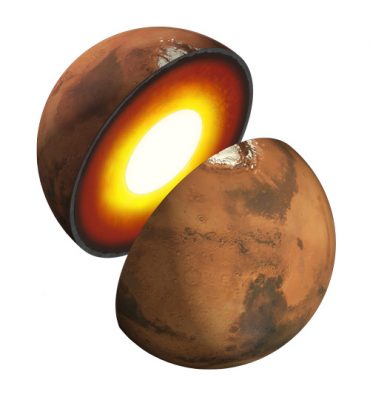Marsquake 24/04/2019 – Posted in: Daily News
Marsquake
For: Preliminary; Mains: GS III
Topics Covered: Findings on Mars, Recent developments in space field, Science & Technology
News Flash
NASA’s robotic probe InSight has detected and measured what scientists believe to be a “marsquake”.
- Roughly equal to a 2.5 magnitude earthquake, was recorded on April 6.
Marsquake
A marsquake is a theoretical quake which, much like an earthquake, would be a shaking of the surface or interior of the planet Mars as a result of the sudden release of energy in the planet’s interior, such as the result of plate tectonics, which most quakes on Earth originate from, or possibly from hotspots such as Olympus Mons or the Tharsis Montes.
The detection and analysis of marsquakes could be informative to probing the interior structure of Mars, as well as identifying whether any of Mars’s many volcanoes continue to be volcanically active or not.
Why Mars?
Previous missions to Mars have investigated the surface history of the Red Planet by examining features like canyons, volcanoes, rocks and soil.
In comparison to the other terrestrial planets, Mars is neither too big nor too small. This means that it preserves the record of its formation and can give us insight into how the terrestrial planets formed.
Marsquake vs. Moonquak
The size and duration of the marsquake also fit the profile of some of the thousands of moonquakes detected on the lunar surface between 1969 and 1977 by seismometers installed there by NASA’s Apollo missions.
The lunar and Martian surfaces are extremely quiet compared with Earth, which experiences constant low-level seismic noise from oceans and weather as well as quakes that occur along subterranean fault lines created by shifting tectonic plates in the planet’s crust.
Mars and the moon lack tectonic plates. Their seismic activity is instead driven by a cooling and contracting process that causes stress to build up and become strong enough to rupture the crust.
Nasa’s InSight Mars lander
InSight, short for Interior Exploration using Seismic Investigations, Geodesy and Heat Transport, is a Mars lander designed to give the Red Planet its first thorough checkup since it formed 4.5 billion years ago. It is the first outer space robotic explorer to study in-depth the “inner space” of Mars: its crust, mantle, and core.
The InSight mission seeks to uncover how a rocky body forms and evolves to become a planet by investigating the interior structure and composition of Mars. The mission will also determine the rate of Martian tectonic activity and meteorite impacts.
Source: Indian Express

